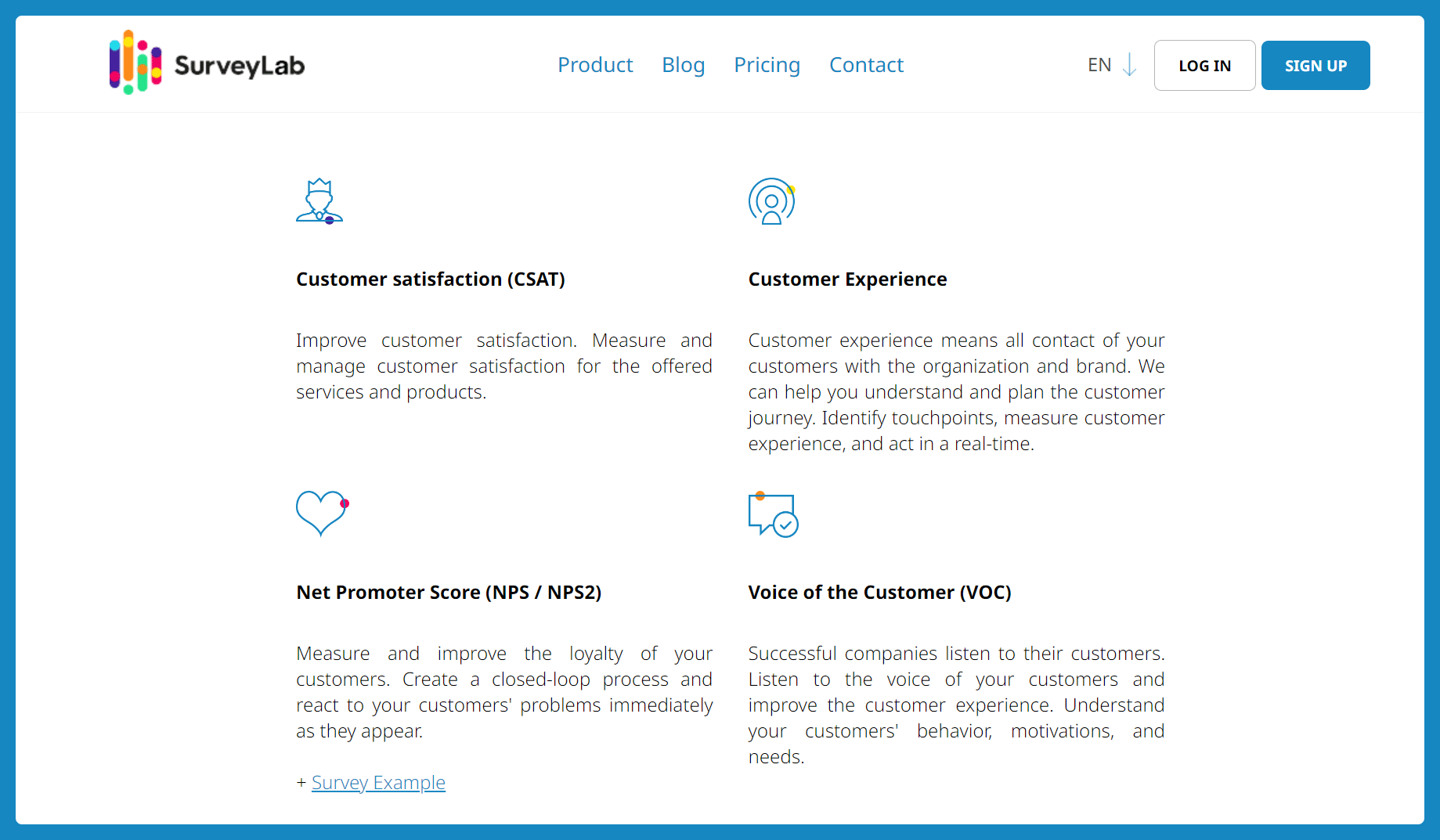A feedback loop is a powerful tool integral to improving services and products within any business.
It comprises a process where the output of a system is circled back as input, enabling continuous improvements based on responses.
But does it bring only positive results?
Let’s find out more about how it affects business, and what are the benefits and challenges.
What is a feedback loop?
Feedback loops are processes where the results of an action influence future actions.
The feedback loop is pivotal in biological systems, like how body temperature or blood pressure are controlled, but it is equally crucial in business environments — for example, in areas concerning customers and employees.
Check out the three types of feedback loops:
- A positive feedback loop happens when the result of an action makes it more likely that the action will continue. When customer satisfaction leads to more word-of-mouth referrals and brings more customers, that’s also a positive feedback loop.
👉 For example, referral marketing tools (like ReferralCandy) reward loyal customers for recommending your brand, turning satisfied shoppers into active promoters and creating a self-sustaining cycle of growth.
- A negative feedback loop is when the result of an action decreases its impact. It aims to reduce the output to stabilize the system back to its set point.
👉 For instance, if a product is found to have defects, a company may slow down manufacturing processes and introduce production management software to address these issues, thereby preventing the production of more defective products.
- A customer feedback loop is specific to how businesses interact with their customers. It may be listening to customers’ experiences, learning from their feedback, and then making changes to improve the product or service.
It’s super important to build better products and satisfy customers.

How do feedback loops operate in business?
Customer feedback stands as a cornerstone in shaping business strategies and improving customer experience.
Collecting feedback through various channels allows businesses to understand pain points, gauge satisfaction levels, and refine their offerings.
It’s a continuous loop of collecting feedback that ensures companies stay in touch with their customers.
And also …
Enhances employee satisfaction
Employee feedback is key to creating a positive environment at work and boosting productivity, as data from your time tracking software will show.
When businesses listen to and respond to feedback, they can fix problems on the spot and make the workplace a friendly place to be. It leads to happier employees and better performance.
The employee satisfaction feedback loop helps find and start practices that make the workforce more motivated and engaged.
📚 Read also: 6 Great Customer Feedback Examples.
Integrates into customer journey maps
Feedback loops in the customer journey enhance the overall experience. They address customer needs at different touchpoints. By understanding and acting on feedback, businesses take actionable steps. These improve customer satisfaction and build a loyal customer base.
EXAMPLE: A coffee shop introduces a new seasonal drink. They decide to set up a feedback loop at the point of sale, which is an early stage in the customer journey.
After purchasing the new drink, customers are given a quick, optional survey at the register where they can rate the drink and suggest improvements. The coffee shop collects this feedback daily in their point-of-sale (POS) system (see, e.g., Lightspeed vs Square POS).
Based on the responses, the coffee shop learns that many customers find the drink too sweet. They quickly adjust the recipe to make it less sweet. They also display a sign saying, “We heard you! Try our new, less sweet version of your favorite seasonal drink.

Are used in market research and product development
Market research uses feedback loops to refine services based on customer expectations.
Involving customers in the development process and responding to their input helps product and software developers like AI agent development companies. Together with the use of open source automation tools for testing, for example, this means they can create solutions that better meet customer needs. This improves the likelihood of success for new offerings and strengthens customer relationships.
Challenges and solutions in implementing effective feedback loops
Creating effective feedback loops involves several challenges, including:
#1 Collecting qualitative feedback
Qualitative feedback is rich in detail but not always easy to quantify
Challenge: Gathering qualitative feedback goes beyond collecting numbers or ratings. It’s analyzing comments, suggestions, and sometimes even emotions from customers. It can be time-consuming and complex.
Solution: To effectively manage this, businesses can use structured methods like targeted surveys with open-ended questions. It should help capture detailed responses. Analyzing this feedback often reveals not just what customers like or dislike (positive feedback loop and negative feedback loop), but also why they feel that way.
#2 Ensuring the feedback is comprehensive
Even though gathering feedback seems like a relatively easy task, it may not always be like that.
Challenge: Getting comprehensive feedback is tough. Many businesses hear only from very happy or very unhappy customers. A feedback like this may give an incomplete view of what most customers think.
Solution: Businesses need to reach out proactively. They should seek feedback from all types of customers, not just the vocal few. Simple, direct questions can help gather this broad spectrum of insights. This approach encourages more customers to share their experiences, both good and bad.
#3 Making changes based on constructive feedback
With a solid feedback response strategy, companies stay dynamic and customer-focused. However, acting on constructive feedback can be tricky.
Challenge: Many businesses collect feedback but struggle to use it effectively. They might miss key insights or delay making necessary changes.
Solution: Set up a clear feedback response system. This system should identify actionable points quickly and clearly. Once they collect feedback, they must prioritize the changes that will have the most impact.
Best practices for maximizing the benefits of feedback loops
To avoid the challenges, we’ve gathered a list of best practices for optimizing feedback loops.
Provide clear communication channels for feedback collection
Make sure customers know where and how to give feedback – give them clear communication channels. They help you get the valuable insights needed for effective customer feedback loops. For mobile interactions, tools like an SMS Backup & Restore app can help retain important feedback conversations for future reference and analysis.
Set up easy-to-find feedback options on your website, in your app, and in your store. Use simple website forms for conversion or direct chat options. Make these tools visible and user-friendly. For teams looking to guide users step by step through giving feedback, consider adding an interactive guide – it’s a practical way to boost response rates and capture higher-quality insights without extra friction.
Also, when clearly showing customers how they can give feedback, you keep your customer feedback loops active and useful. Plus, it shows that you value their input and are ready to listen.
✨ GOLDEN TIP: Use SurveyLab ✨
It is a surveying platform that is easy to use for both – people who are filling in surveys and people who gather information.

Here’s what makes it special:
- SurveyLab shows you survey results as they come in. You can see what people are saying right away.
- Works well on different devices like PCs, tablets, and mobile phones – mobile-friendly design makes it easy for people to take your survey from anywhere.
- You can make surveys in any language. Great for reaching people all over the world.
- SurveyLab works well with other systems like CRM and Google Analytics. It helps you manage data better and work more productively.
- You can add your own logo and design to the surveys. Your brand looks consistent, then.
- The platform includes many helpful features for surveys. You can add videos, use different types of questions, and make your surveys interactive.
Alternatives: Gravity Forms, SurveyMonkey, Wufoo.
Analyze feedback to catch trends and insights
Always look at the feedback you receive to spot trends and insights.
This is where positive feedback loops really do their magic.
Go through the feedback regularly to see what stands out. Maybe many customers mention a certain feature they love or a problem they often face. Spotting these patterns lets you know what to do more of and what to fix. For example, service providers reviewing client input on call quality might turn to the best VoIP reseller program as a way to identify solutions that address recurring issues while enhancing features customers already value.
With positive feedback loops, you use what customers tell you to make your product or service better.
Your customers will be happy and it keeps your business on top of what truly matters to them. Keep your analysis simple and focused, and you’ll find valuable trends that can guide your decisions.
📚 Read also: How to Analyze Survey Data.
Implement changes based on feedback to close the loop
Make changes based on what customers tell you. This is how you close the loop in your customer feedback process.
When you adjust your product or service according to customer feedback, you complete a positive feedback loop.
Let’s say customers suggest a new feature, and you add it. Or they report a bug, and you fix it. So you listen and respond.
It all keeps the positive feedback loop going. Customers see their input has real effects, making them more likely to stay loyal and engaged.
Regularly revisit the feedback process to make it more efficient
Seeing where you can improve how you collect and use feedback helps your business a lot.
Each time you tweak the process, you make it easier for customers to share their thoughts. This is where positive feedback occurs — when customers see you act on their suggestions, they feel heard and valued.
Regularly update your feedback methods to ensure that gathering and acting on customer insights remains smooth. You will keep the positive energy flowing, and make every part of your business better tuned to customers..
Conclusion: feedback loops as catalysts for growth and improvement
Feedback loops are super helpful for improvement and adaptation in business.
As you use both positive and negative feedback loops, you can respond well to customer expectations.
Your response improves service delivery and product quality. Feedback loops involve more than gathering responses – they focus on creating a process of continuous improvement.
And for collecting feedback, use a solid tool like SurveyLab.
FAQ on feedback loop
Check out the answers because you ask a question.
Positive feedback occurs when an effect increases its cause and reinforces a condition. This loop amplifies changes – it often leads to more extreme outcomes.
An example: when body temperature rises due to a fever, the body might respond by boosting metabolic activity, which generates more heat. This additional heat causes the body temperature to rise even further.
A negative feedback loop stabilizes a system. Negative feedback occurs when an effect reduces its cause. The loop helps maintain balance. Negative feedback systems are common in nature and technology.
One example is body temperature regulation. If you are too hot, you sweat to cool down. Another example is blood sugar control. When levels rise, your body releases insulin to decrease them.
A customer feedback loop gathers opinions from users. Companies use this loop to improve products and services. They collect responses, analyze them, and make changes. The loop helps meet customer needs better.
A positive feedback mechanism starts with a change. Positive feedback takes place, accelerating change. As the process continues, the effect grows. It often results in quick changes.
